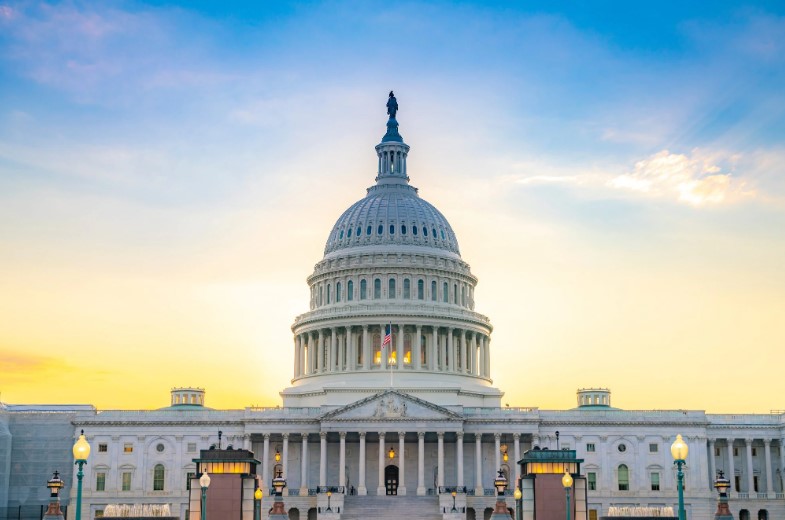Secure Act 2.0 - What's It All About?
Submitted by Robert Gordon & Associates, Inc on January 19th, 2023
In one of its final acts of 2022, Congress approved a massive year-end spending bill that includes the long-anticipated retirement savings package known as SECURE Act 2.0.
The provisions of the new retirement package are included in the 4,155-page bill that will fund every federal agency and government program through September 30, 2023. The bill was cleared by the House on December 23, one day after the Senate voted for it. President Biden signed the bill into law on December 29.
After several months of negotiations between House and Senate leaders, SECURE Act 2.0 was finalized. The law combines three different retirement-focused bills and holds bipartisan support across both chambers. It builds on the SECURE Act, which was approved by Congress in 2019.
Notable provisions for retirement planning
The most notable provision from a financial planning perspective is the increase in the age at which individuals must begin taking required minimum distributions (RMDs) from their retirement account from age 72 to 73. The new RMD age applies to anyone who turns 72 on or after January 1, 2023. In 2033, the RMD age will increase again to 75.
Under the new law, penalties for missing or underestimating RMDs will be reduced. Failure to take the proper RMD from a retirement plan used to include a penalty of 50% of the shortfall. Beginning this year, the penalty is reduced to 25% or to 10% (if the individual corrects the issue within two years). RMDs will also be eliminated completely for Roth 401(k) accounts beginning in 2024.
The bill also increases catch-up contributions for individuals ages 60 through 63, beginning in 2025. Individuals who qualify could contribute an additional 50% of the regular catch-up contribution limit, which kicks in at age 50. If the provision were in place for 2023, that would mean a 62-year-old could contribute the maximum to their company's 401(k) plan of $22,500, plus a catch-up contribution of $7,500, plus an additional 50% of that catch-up contribution, or $3,750—for a total of $33,750. That amount is likely to rise a bit by the time the new rules take effect in 2025.
In addition, the individual retirement account (IRA) catch-up contribution limit will be indexed to inflation beginning in 2024. That means the current $1,000 cap on catch-up contributions would rise annually, in $100 increments, to keep up with inflation.
The new law also makes two notable changes to the Qualified Charitable Distribution (QCD) rules, often referred to as the "IRA charitable rollover." The provision allows for individuals over 70 ½ to make a one-time election of up to $50,000 for a charitable distribution to a charitable remainder annuity trust, charitable remainder unitrust or a charitable gift annuity. And, beginning in 2024, the overall QCD limit of $100,000 will be indexed to inflation so that it will likely increase a modest amount each year.
The legislation also makes several changes to help companies start an employer-sponsored plan or encourage participation in an existing plan. The law, for example, creates a "Starter 401(k)" plan that simplifies the requirements for a small company to launch a plan and expands the tax incentives for companies that start a plan. Beginning in 2025, employees at companies that are launching a new retirement plan would be automatically enrolled in the plan, unless they opt out, and would see their contribution amount automatically increased annually.
It also enhances the Saver's Credit, which encourages lower-income individuals to save for retirement. The bill turns that into a "Saver's Match," where the federal government would match contributions directly into an individual's retirement account.
Other significant provisions to keep in mind:
- Beginning in 2024, employers have the option to match student loan payments with a contribution to the employee's retirement plan account. The goal is to help workers who are burdened by student loans and can't afford to make a contribution to their retirement plan by ensuring that they are accumulating some retirement savings even as they pay down their loan.
- Employers will also have the option to allow employees to create "rainy-day funds" in their retirement plan. Individuals would then be able withdraw up to $1,000 from the plan penalty-free for emergencies. The provision addresses a concern that spiked during the pandemic, when employers saw a big increase in the number of employees who were tapping their retirement accounts to cover unexpected expenses.
- Victims of domestic abuse can withdraw up to $10,000 penalty-free from their retirement plan account.
- Individuals can withdraw up to $22,000 from an employer-sponsored plan or an IRA for federally declared disasters.
- Individuals can roll up to $35,000 from a 529 account to a Roth IRA in the name of the student beneficiary. The 529 account must have been in existence for at least 15 years. That provision becomes effective in 2024.
- Long-term part-time workers will become eligible for their company’s retirement plan after two consecutive years with at least 500 hours of service. Previous law requires three years of service.
- The creation of a "retirement savings lost and found" national database to help individuals find their benefits if they changed jobs, or if the company they worked for moved, changed its name or merged with a different company.
Bipartisan triumph for retirement savings
Passage of the SECURE Act 2.0 was seen as a bipartisan triumph in a deeply split Congress. Key players included House Ways & Means Committee Chairman Richard Neal (D-MA) and Senate Finance Committee Chairman Ron Wyden (D-OR), who shepherded the legislation through their committees and crafted a compromise when there were differences in approach between the two chambers. Longtime retirement savings advocates Senator Ben Cardin (D-MD) and Senator Ron Portman (R-OH), whose partnership on these issues goes back two decades, were also critical in seeing the legislation cross the finish line. With Portman retiring from Congress at the end of the year, passage of the bill was a capstone for one of Capitol Hill's biggest champions for retirement savings.

